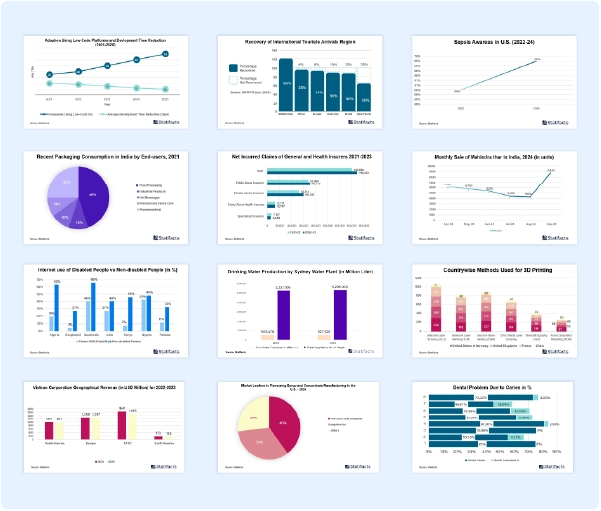The U.S. 3D NAND memory market is growing due to demand in consumer electronics, AI, cloud computing, and data centers, offering high-speed, efficient storage.
U.S. 3D NAND Memory Market Report Highlights
- By type, the triple-level cell segment accounted for a considerable share of the market in 2024.
- By type, the multi-level cell segment registered its dominance over the global market in 2024.
- By application, the laptops & PCs segment held a dominant presence in the market in 2024.
- By application, the cameras segment is predicted to witness significant growth in the market over the forecast period.
- By end-users, the consumer electronics segment maintained a leading position in the market in 2024.
- By end-users, the enterprise segment is anticipated to grow with the highest CAGR in the market during the studied years.
3D NAND, also called vertical NAND (V-NAND), is the latest kind of sustaining flash memory or flash storage where the memory cells are arranged perpendicularly in numerous layers to enlarge storage density and transfer data between a personal computer and other digital devices. Single-level cells, multi-level cells, and triple-level cells are its primary types.
A traditional structure of 3D NAND consists of a cell container with a staircase and peripheral transistors right beside it. Using 3D NAND, the devices can operate swiftly and proficiently while conserving energy. These flash memories can be utilized in cameras, laptops, smartphones, etc.
The need for more storage in the consumer electronics and enterprise sectors keeps mounting. These sectors include smartphones, laptops, cloud computing, big data analytics, IoT deployments and more. In addition, the automotive sector involving advanced infotainment systems and the creation of self-contained vehicles asks for enormously productive and greater storage capacity alternatives for managing complex procedures and ample sensing of data. 3D NAND flash memory meets the requirements of all the aforementioned sectors.
Consumers are actively seeking smartphones with high-definition cameras and apps with tremendous data storage capacities. In the same way, they want the devices they use to be compact and thinner. Solid-state drives (SSDs) that utilize 3D NAND for device shrinking help with this. The businesses, therefore, focus on employing 3D NAND technology as its features, like quicker speed, reduced consumption of power, and expandability make it an impeccable choice for data storage.
A data center is a place consisting of storage systems and computation frameworks used by businesses to store crucial applications and data. Since data centers are known for withholding and processing large amounts of data provided by governments and persons other than business owners as well, the demand for 3D NAND memory is growing radically as it offers immense storage capacities. Additionally, data centers that assist cloud computing services are increasing significantly. This is because 3D NAND technology facilitates rapid reading and writing speeds necessary for managing data-laden software in cloud environments. The soaring appeal for data centers and cloud storage is driving the 3D NAND memory market further.
As 3D NANDF memory piles data vertically, etching or carving holes using advanced plasma techniques plays a vital role in developing these piles. Artificial Intelligence (AI) technologies, including Large Language Models (LLMs), Reinforcement Learning (RL), Neuro-symbolic Networks, and Multi-agent Systems, prove to be a game-changer in enhancing etch procedures. Predictive modeling and AI-aided research and development are escalating the creation of etching processes while strengthening the connection of AI with 3D NAND memory.
Products with 3D NAND memory can tackle substantial amounts of data, that too skillfully. Businesses cannot afford to lose their information. At the same time, storage of all the information in one place isn't always possible. This is where 3D NAND memory kicks in. Cloud computing helps in storing any kind of information reservedly. 3D NAND has the ability to reserve a significant portion of data while keeping it safe in the cloud. Self-supervised vehicles like smart cars both use and yield data, increasing the need for supplemental storage. Similar to this, advanced driver assistance systems or ADAS gather data by means of diverse sensors, boosting the demand for high-velocity storage. The aforestated factors contribute to the future prospects of the 3D NAND market.

